Brilliant scientists
What came before: science or scientists? What person with good reason can be considered a great scientist, not because he has learned a lot and achieved great heights in his craft thanks to constant painstaking work, but because of his ability to open new horizons of knowledge, to penetrate deeper into the essence of objects and phenomena? For example, Kant was completely skeptical of the intellectual abilities of scientists, believing that they were alien to impulses of inspiration, uncommon thinking.
This opinion is confirmed by some statements of major researchers and inventors, who believed that the main factors of success in their activities are perseverance, patience, "sweating" (T. Edison's expression). Sometimes scientific discoveries were made due to a happy coincidence of circumstances; it may seem that the genius of the scientist has nothing to do with it. For example, this refers to the discovery of bioelectricity by L. Galvani or the invention of penicillin by A. Fleming, who played a colossal role in medicine.
Strictly speaking, the beginning of science should be considered the time when its method was clearly defined, based on experience, experiments, systematization of facts and work with them according to the laws of logic. However, it is known that some prominent scientists in a relatively recent period deviated from these principles, while some learned people distant past spontaneously adhered to them.
Our list of the greatest scientists includes all those who significantly influenced the course of scientific thought, raising it to more high level or opening up new directions of research for her.
It is unrealistic to trace the main stages of the development of science, highlighting individual prominent scientists in a brief review. There are many sciences about nature and man, their number is constantly growing, and the most significant achievements are associated, perhaps, with the creation of teachings that promise the data of a number of sciences (for example, the theory of the biosphere by V.I. Vernadsky).
However, even in this case, not everything is as simple as we would like. For example, the Russian geochemist and mineralogist, academician A.E. Fersman substantiated the doctrine of technogenesis - the global activity of man, was an original thinker and a talented writer. He should rightfully be considered a great scientist or even a universal genius. But his achievements remain underestimated, in world science his name does not enjoy the same honor as the name of his teacher and friend V.I. Vernadsky. There are many such examples.
For more than a century, scientists who have been awarded the Nobel Prize have been especially honored. There are many such laureates; just listing them with an indication of the prize-winning works would take dozens of pages. However, it would be too rash to be guided by these names. There are few outstanding thinkers among them. The number of laureates did not include, say, such indisputable scientific geniuses as D.I. Mendeleev, V.I. Vernadsky. Moreover, at the whim of the founders (and their ignorance), awards are not awarded for achievements in the earth sciences - a gigantic and critical area.
Among the Nobel laureates, one name stands out: Maria Sklodowska-Curie. She was the first woman to receive this award and the only (or one of the very few?) Who received it twice - for achievements in physics and chemistry. But even such a wonderful representative of the scientific community there is no good reason to count among the chosen geniuses.
The entire life of Maria Sklodowska-Curie (1867-1934) demonstrates an extraordinary determination, perseverance, devotion to science. Her father, who graduated from St. Petersburg University, taught physics and mathematics in Warsaw, her mother ran a women's school. After receiving a good initial education, especially in the field of natural science, Maria entered the Sorbonne in Paris. Here she married the physicist Pierre Curie (1859-1906) and began to work in his laboratory. They jointly studied radioactivity and in 1898 discovered polonium and radium. In 1903 he was awarded the Nobel Prize in Physics for his study of the phenomenon of radioactivity. And in 1911, Mary was awarded the Nobel Prize in Chemistry "in recognition of her contribution to the development of chemistry, which she made by discovering the elements radium and polonium, determining the properties of radium in metallic form, and, finally, for her experiments with this element."
And yet, with all the outstanding discoveries of M. Sklodowska-Curie, it must be admitted that they were the result of high professionalism and painstaking work, and not the knowledge of nature in a broad sense, the creation of theoretical concepts that reveal our ideas about the world around us in a new way. In this respect, her husband is considerably more interesting, mainly for his work on symmetry. On the basis of his research, interrupted by death from an accident, V.I. Vernadsky developed innovative ideas about various states of space, stable violations of symmetry (dissymmetry), which, according to P. Curie, create phenomena.
But Pierre was not the discoverer of such ideas either. They were developed by the French chemist, biochemist, microbiologist Louis Pasteur (1822-1895). He laid the foundations of stereochemistry; developed a theory of fermentation; discovered a lactic acid bacterium by studying its vital activity; proved that yeast can grow without air access (anaerobic). By experiments, he refuted the hypothesis of spontaneous generation of living organisms, proposing a method of "pasteurization" of food products, which protects them from spoilage. He was the first to substantiate and master vaccinations that make people and animals immune to some dangerous diseases. Pasteur was the first to draw attention to the phenomenon of dissymmetry.
Major scientific discoveries made collectively are associated with the names of Curie and Sklodowska. This highlights the changes that have begun in physics and chemistry. Scientific techniques and technologies, involving the work of a number of specialists, began to play a large and ever-increasing role. The last outbreak of individual creativity of scientists was observed in the first half or even a third of the 20th century, when quantum mechanics was developed in physics, genetics in biology, geochemistry, and the doctrine of the biosphere in the earth sciences. All this was the result of the efforts of individuals and reflected, to one degree or another, their individuality (therefore, say, three versions of quantum theory appeared at once). Subsequently, the number of co-authors in scientific research and publications grew rapidly in inverse proportion to the originality of the ideas put forward.
The largest technical advances of the recent past - the development of atomic energy, space research and expeditions, the creation of electronic information systems - were the result of the work of huge teams, of which the leaders, as well as the first cosmonauts and astronauts, are the most famous.
The great advances in technical thought are based on the discoveries of scientists from a wide variety of specialties. For creating nuclear power plant, a satellite of the Earth, a computer, it is not enough to have a basic idea; a lot of specific technical and technological developments and serious preliminary "groundwork" are needed.
For example, K.E. Tsiolkovsky. He not only proposed schemes for spacecraft, but also popularized the idea of flight to other celestial bodies, their development. However, the ancient Indians and Chinese began to use the first missiles for military purposes, and at the beginning of the 20th century, the creators of weapons such as "Fau" and "Katyusha" began to solve similar problems. English science fiction writer Herbert Wells was the first to write about atomic bombs, and V.I. Vernadsky a century ago. But no, even the greatest, specialist in several areas can theoretically substantiate in all details, say, a computer. In such cases, only collective creativity is the key to success (as opposed to understanding nature).
From the earliest times of scientific research and theories, the primacy belonged to mathematics, astronomy, mechanics, physics, and partly chemistry. Knowledge about nature was in the nature of descriptions and - systematization. And although physics at first acted as natural science (from “fuzis” in Greek “nature”), it quickly began to rely on experiments, moving on to studying not real, extremely complex objects, but individual phenomena, elements of the surrounding world.
This method has proven to be very fruitful. It becomes possible to express graphically, in numbers, formulas, many natural laws. It is extremely difficult to do this by studying natural objects due to their complexity and diversity. As a result, "exact disciplines" took shape. Their rapid progress was facilitated by the fact that they turned out to be very useful for the creation and improvement of technology (technical systems), in construction, land management, for making calendars, measuring time ...
The triumph of mechanics and physics continued for a long time, until the 17th century, when the rapid growth of chemistry, biology, geography, and geology began. Until then, thanks to the successes of the "exact sciences", a mechanistic worldview was formed, supplemented by religious and philosophical ideas about the Supreme Mind, which determines the harmony of the Universe. Now the pictures of the world have become more complicated as knowledge about the surrounding earthly nature, structure and activity of living organisms is accumulated. Revolutionary changes have taken place even in such an ancient, logically (seemingly) verified and grounded science as geometry; its limits have expanded enormously, overcoming the framework established by Euclid (thereby, it has come closer to reality)
Especially it is necessary to stipulate the situation with geography. This area of knowledge originated in ancient times. It was of great practical and theoretical, as well as ideological significance, which was most clearly demonstrated by the era of the Great geographical discoveries... A revolution took place in the life of many countries and peoples, scientific and technological progress accelerated sharply, and the invention of printing contributed to the onset of the Enlightenment (along with an increase in the number of universities in Europe). And yet, the outstanding geographical achievements of Columbus, Vasco da Gama, Magellan and many other navigators and no less significant discoveries of explorers in themselves can hardly be attributed to the number of ingenious, out of the ordinary theoretical achievements.
Scientists firmly established the sphericity of the Earth long before the Great Geographical Discoveries, and the Greek scientist Eratosthenes at the very beginning of the II century BC. calculated its radius relatively accurately. Before Columbus, globes and maps of the hemispheres were created (albeit without the New World, which was discovered long before him by the Norwegian Leif Eriksson). If we began to talk about the authors of the greatest geographical discoveries, we would have to name dozens of names or give preference, for example, not Columbus, not Amerigo Vespucci, who was the first to claim that he was discovered New World, not India. We will limit ourselves only to the "father of history and geography" Herodotus.
The situation with the representatives of the most extensive group of geological sciences is quite deplorable, despite the fact that this knowledge provides the raw material and energy base of the technical civilization. Moreover, the fate of humanity depends on whether it will be able to establish its relations with the natural environment - the biosphere. This cannot be achieved without relying on geological knowledge.
Biology covers another colossal area of knowledge. It would seem that what could be more important is the study of organisms, their structure, life, evolution, relationships, connections with environment, the meaning of existence and death. We still do not really know what life is, what forms it can take on Earth and in space, whether it was spontaneous or it is eternal, like matter and energy ... There are many questions, they touch upon the fundamental problems of being associated with cosmology, philosophy and religion. But the development of scientific thought since the 19th century followed the path of ever narrower specialization. The most important for the worldview, the most fundamental questions were relegated to the category of secondary ones, and in the foreground were specific studies that have applied value and are economically profitable, capable of generating income for developers and, most importantly, their financiers. After Darwin, the biological sciences expanded rapidly in number. And when the Swedish chemist Svante Arrhenius in late XIX century put forward the hypothesis of panspermia, the cosmic spread of the embryos of life, biology ceased to play any significant role in the formation of social consciousness, giving way to physics.
It just so happened that until now the primacy in the formation of the worldview is given to formalized "exact" sciences, and not natural, studying real natural objects in their development. For this reason, it will be necessary to ignore a number of original major natural scientists, representatives of the earth sciences and life.
In part, the recognition of the priority of the physical and mathematical sciences is due to objective reasons: the penetration of scientific technology and thought into the microcosm, the knowledge of the fundamental laws of the universe, the successes of astrophysics. A colossal range of coverage of reality: from the smallest particles to the entire Universe!
Indeed, the achievements of outstanding physicists of the 19th and early 20th centuries deserve not only attention, but also admiration. The Englishman James Clerk Maxwell (1831-1879) in his "Treatise on Electricity and Magnetism" derived a system of equations, substantiated the electromagnetic theory of light, and suggested the existence of the corresponding waves. His ideas and developments enriched theoretical physics, predetermined the subsequent achievements of electrical and radio engineering. The German Wilhelm Konrad Roentgen (1845-1923) conducted classical studies of the electrical properties of crystals; discovered the X-rays, named after him, invented the equipment that uses them.
Major discoveries were made by the Dutch physicist Henryk Anton Lorenz (1853-1928). He managed to substantiate the electronic theory on the basis of the interaction of the electromagnetic field and the charged particles that create it; prove that atoms are composed of heavy, positively charged nuclei and the electrons surrounding them. He became the author of the electrodynamics of moving bodies and found in this connection the formulas for transforming the coordinates of space and time (Lorentz transformation), which are used in the special theory of relativity of Albert Einstein. Lorentz was able to explain a number of important optical and electrical phenomena predicting new ones ... This scientist deserves to be among the elite, if not for one circumstance: he is practically unknown to the general public, his discoveries did not shock the imagination of popularizers and publicists, like, say, the paradoxes of the theory of relativity.
Another great physicist - the Englishman Joseph John Thomson (1856-1940) discovered the electron at the end of the 19th century and determined its properties; developed a model of the atom, laying the foundations for modern concepts of the structure of matter. His compatriot Ernest Rutherford (1871-1937), after the French scientist Henri Becquerel discovered the phenomenon of radioactivity in 1896, established the existence of alpha and beta rays by elucidating their properties; proposed a new model of the structure of the atom and laid the foundations for the doctrine of radioactivity, and in 1919 he split the atomic nucleus for the first time. He theoretically predicted the existence of a neutral particle (neutron), which was experimentally discovered by his student J. Chadwick.
An undoubtedly outstanding scientist was the Austrian Erwin Schrödinger (1887-1961), who worked in Germany and England. He developed the mathematical theory of color, became one of the founders of wave mechanics (quantum), which most fully reveals the laws of the microworld, derived an equation (bearing his name), which is of fundamental importance in modern atomic physics. He is the author of a work, remarkable in terms of the abundance of original ideas, "What is life from the point of view of physics?"
By the way, the founder of biophysics, electrophysiology can be considered the Italian Luigi Galvani (1737-1798), who published "A Treatise on the Forces of Electricity in Muscular Movement", although he made some mistakes, which were noted by Alessandro Volta (1745-1827), who continued Galvani's research. Volta discovered the electrical excitability of various tissues and organs; created a galvanic battery ...
If we are talking about electricity, then we should mention Benjamin Franklin (1706-1790), an American scientist and statesman who figured out the nature of lightning, the inventor of the lightning rod, who participated in the creation of the US Declaration of Independence. It should also be noted the achievements of the Englishman Michael Faraday (1791-1867), the creator of the doctrine of the electromagnetic field. He discovered electromagnetic induction and studied it in detail, after which current generators were built; developed the theory of electrolysis. Russian physicist A.G. Stoletov wrote: "Never since the time of Galileo the world has seen so many amazing and varied discoveries that have come out of their own head, and will hardly soon see another Faraday."
Browse only one branch scientific knowledge provides several strong names at once. But why should we limit ourselves only to achievements related to physical experiments? Here the criterion of genius is rather vague: much depends on the available technique, methodology and accuracy of the experiment, luck, finally. Creativity can sometimes be completely absent, if by this we mean impulses of inspiration. It takes on a different form: perseverance, accuracy, attentiveness, observation.
For example, the English bacteriologist Alexander Fleming (1881-1955) was not a great thinker or a great public figure, but his discovery had a tremendous effect, saved millions of lives. And it all started with a happy coincidence: while conducting laboratory studies, he drew attention to the fact that the pathogenic bacteria of staphylococci died in the immediate vicinity of a certain type of mold. So a remedy was discovered against many dangerous inflammatory processes - penicillin. As it often happens (is it by chance?), The talented scientist was also a man of an extraordinary mind. He believed: “For something completely new to be born, a chance is needed. Newton saw an apple fall. James Watt watched the teapot, the X-ray messed up the photographic plates. But all these people were quite well equipped with knowledge and were able to illuminate all these ordinary phenomena in a new way. "
There is one more feature scientific advances: they open up new areas of knowledge, new perspectives. As Fleming's colleague Lovell noted, “The greatest virtue of a job well done is that it opens the way for other, even better work, and thus brings its decline closer. The purpose of research work is not to promote a scientist, but a science. " The selfless search for truth among these scientists was not in words, but in deeds. The discoverers did not fundamentally patent penicillin, which would have given them considerable income, but would have made it difficult to introduce the most useful agent into medicine and pharmacology (their colleagues in the United States were at a loss for such an act). Fleming expressed a perspicacious thought: “Transfer a researcher, accustomed to an ordinary laboratory, to a marble palace, and one of two things will happen: either he will defeat the palace, or the palace will defeat him. If the researcher gains the upper hand, the palace will turn into a workshop and will look like an ordinary laboratory; but if the creator gains the upper hand, the researcher perishes ... I saw how wonderful and sophisticated equipment made researchers completely helpless, since they spent all their time manipulating a multitude of ingenious devices. The machine defeated the man, not the man over the machine. "
The last phrase can serve as an epigraph to the entire technical civilization. (Twenty years before Fleming, in the philosophical poem "The Ways of Cain", Maximilian Voloshin wrote: "The machine defeated man ...") Is this why, with the development of the most sophisticated experimental technique, physics of the second half of the 20th century became unusually impoverished with original, strong, bold ideas? And another aspect: few people pay attention to the fact that the fame and authority of physicists grew in parallel with the creation of more and more powerful weapons of mass destruction and their means of delivery. And the idea of the explosion of the universe took shape at a time when the American atomic bombs incinerated two peaceful Japanese cities.
Extraordinary thinkers were, perhaps, mainly naturalists who cognized real natural objects and phenomena: William Harvey (1578-1657), an English physician and physiologist, discovered the arterial and venous circulatory system (treatise "Anatomical research on the movements of the heart and blood in animals") , and in "Research on the origin of animals" showed the general patterns of the formation of organisms. Two hundred years after him, the Russian scientist Karl Maksimovich Baer (1792-1876) - a native of Estonia, German by nationality - discovered a number of laws of embryology, the science of the transformation of animal embryos. He was one of the founders of ecology, and also led almost the world's first complex biological and geographical (ecological) expeditions. “In St. Petersburg of Nikolayev's time,” wrote V.I. Vernadsky, - lived a great naturalist and great sage. This historical fact of great importance for the development of our culture ”.
The most talented successor of the ecological direction in our country and, possibly, in the world was Vladimir Nikolaevich Sukachev (1880-1967). He developed the doctrine of the relationship between plants and animals, as well as them with the environment (about biocenoses and biogeocenoses); did much for the knowledge of forests and swamps; developed a methodology for spore-pollen analysis, which makes it possible to reconstruct natural conditions past eras, theoretically substantiated and practically carried out protective afforestation (the so-called Stalin's plan for the transformation of nature). However, many experts foreign countries they know and appreciate the achievements of Sukachev, although even in our country, scientists and popularizers of science rarely mention them ...
It is characteristic of great naturalists that they rarely confine themselves to a narrow range of research, as is usually the case with mathematicians and physicists (a number of natural scientists should be classified as universal geniuses - H. Huygens, R. Hooke, T. Jung and others). In order to deeply and fully comprehend the life of nature, it is absolutely not enough to restrict ourselves to the limits of any one science, and in order to clarify general laws, it is necessary to first do a colossal work of collecting and classifying facts. For example, the Swedish naturalist Karl Linnaeus (1707-1778), an excellent botanist who discovered about 1500 plant species, described the flora of a number of countries, created the "Philosophy of Botany", and not limited to this, performed a tremendous work on the systematization of the flora and fauna ("The System of Nature") ... Only after that it was possible to begin to elucidate the biological laws.
The grandiose plan was carried out by Georges Louis Leclerc Buffon (1707-1788), who created the 36-volume "Natural History". This demanded from him truly encyclopedic knowledge. It is even strange that his work is glorified incomparably less than Newton's "Mathematical Principles of Natural Philosophy." This can only be explained by the fact that the secrets of heaven amaze people more than earthly miracles, and the formalization of the laws of nature fascinates more than attempts to reveal her life in all its diversity and splendor. After all, Buffon summarized information about the kingdoms of minerals, plants and animals, outlined his hypotheses of natural origin Solar system, Earth, living organisms. He suggested that the comet once "ripped out" part of the solar mass, from which the planets were formed. As the Earth cooled down, epochs changed on it, life developed. Buffon brilliantly expounded his scientific views. In his words, “style is the person himself”; "Style should carve thought." And one more of his statements, which is useful for any thinker to take into account: “Writing well is at the same time thinking well; to have talent, soul and taste together. " (This principle was embodied in life by Alexander Humboldt, whom we will talk about as a universal genius.)
The eminent naturalist Jean Baptiste Lamarck (1744-1829), continuing the work of Linnaeus, wrote not only the French Flora, but also the two-volume Philosophy of Zoology, where he gave the first detailed sketch of the evolution of the animal world. In his opinion, its main driving force is the influence of the external environment (the idea was later refuted by Darwinists, but its evidence was also obtained). In the book "Hydrogeology" he correctly emphasized the huge role of water in the formation of the face of the Earth. Lamarck owns the capacious terms "biology" and "biosphere" (true, as he called round organisms, but then the biosphere began to be considered the area of life on the planet). Lamarck can rightfully be attributed to the number of universal geniuses, although his name became especially popular in connection with the development of evolutionary theory, when the term "Lamarckism" appeared, and supporters of natural selection and the struggle for existence subverted his idea of the possibility of inheriting acquired traits.
Already in the XX century, the Russian Soviet geographer, ichthyologist, biologist Lev Semenovich Berg (1876-1935), in the development of Lamarckism, put forward the concept of nomogenesis, directed evolution based on the patterns of interaction of organisms with the environment, and not the selection of random genetic deviations from the "norm"
It may seem to some that among naturalists there simply were no extraordinary geniuses like Newton (or Einstein) who could encompass the entire Universe in their minds and deduce its most general laws in the form of a system of formulas. At the same time, it is forgotten that in the mathematical models of the universe, celestial bodies are represented in the form of points, and life and mind are not taken into account at all. Thus, scientists seem to initially take themselves (as well as the Earth, living organisms, humanity, civilization) beyond the framework of their models, believing that this is how the objectivity of research and generalizations is realized. In reality, the emphasis is on the conventionality (inadmissibility, in principle, when it comes to the Universe, which objectively includes life and mind) of such models, their fundamental limitations.
In this regard, I recall the works and claims of the French astronomer, physicist, mathematician Pierre Simon Laplace (1749-1827). He made a number of discoveries in mechanics, the theory of differential equations and the theory of probability. Together with Lavoisier, he was engaged in physical and chemical research, developed the theory of capillarity, determined the speed of sound propagation, etc. His main achievement was the creation of the theory of celestial mechanics, the dynamics of bodies in the solar system. Laplace substantiated his hypothesis of the formation of stars and planets from the primordial nebula ("Exposition of the system of the world" in 2 volumes, 1796). They say that when he met Laplace, Napoleon remarked: "In your book you did not even mention God!" The scientist replied: "I do not need this hypothesis."
In his belief in the possibilities of mathematics, mechanics and physics, Laplace went unacceptably far. He believed that on the basis of these sciences, one can ultimately create a general theory of Nature (including the life of the Earth, living organisms). Such a problem cannot be solved not only with the help of physical and mechanical sciences, but in general with all sciences taken together.
So, we proceed to the story of those who are among the chosen scientific geniuses. There can hardly be any doubt that they do not differ in some extraordinary abilities from those mentioned in the introduction and from a considerable number of other outstanding researchers of nature. But there are still a number of wonderful psychologists, sociologists, economists, cultural scientists, historians who would be worthy of our attention. Only a hundred “vacancies” in the book of this series do not allow to do this. And further. Representatives of the humanitarian disciplines to a large extent develop the successes of philosophy and literature, and the social sciences are too politicized, so that the assessment of the creativity of their representatives changes dramatically in connection with changes in the life of states, the change of ruling classes and groups.
The fact that geniuses during their lifetime often remain unrecognized, and their discoveries are appreciated only by subsequent generations, is, alas, a sad pattern. The dramatic and sometimes tragic fates of many great scientists confirm two truths: all brilliant scientific discoveries and inventions were much ahead of their time, and public rejection of innovations was caused either by indifference or by fear of novelty.
Let us recall a few more glorious names who have made an invaluable contribution to the growth of progress and the development of civilization as a whole.
Semmelweis Ignaz Philip , (1.7.1818 - 13.8.1865), Hungarian doctor, obstetrician
 After graduating from the medical faculty of the Vienna Institute in 1844, Semmelweis went to work in a clinic, where he became interested in the cause of the so-called "maternity fever" - postpartum sepsis, from which almost a third of women in childbirth died. At that time, every clinic had a morgue, and often the same doctors dissected corpses and delivered. In 1846, this fact prompted a young doctor to develop a method for dealing with postpartum sepsis: he suggested that doctors disinfect their hands with a solution of bleach. The method gave amazing results: the percentage of deaths of young women due to postpartum sepsis dropped sharply from 29 to 1.2%.
After graduating from the medical faculty of the Vienna Institute in 1844, Semmelweis went to work in a clinic, where he became interested in the cause of the so-called "maternity fever" - postpartum sepsis, from which almost a third of women in childbirth died. At that time, every clinic had a morgue, and often the same doctors dissected corpses and delivered. In 1846, this fact prompted a young doctor to develop a method for dealing with postpartum sepsis: he suggested that doctors disinfect their hands with a solution of bleach. The method gave amazing results: the percentage of deaths of young women due to postpartum sepsis dropped sharply from 29 to 1.2%.
However, despite its simplicity and effectiveness, the Semmelweis method was met with extremely hostile reactions by the medical community. The constant harassment drove the pioneering doctor to a psychiatric hospital, where he died. This discovery received recognition only after his death, and in 1906 a monument to Ignaz Semmelweis was erected in Budapest, on the pedestal of which the inscription "Mothers Savior" was made.
(10 (22) August 1873 - 7 April 1928), doctor, economist, philosopher, politician, natural scientist
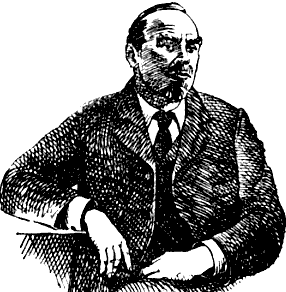 In the 1920s, the Russian economist A.A. Bogdanov published a draft of a new scientific discipline - tectology, or, as the scientist himself explained, "general organizational science." The work of the same name remained incomprehensible and unrecognized by contemporaries, although later the Soviet cyberneticist G.N. Povarov wrote that the tectology of Alexander Bogdanov anticipated the creation of a new science - cybernetics. In creating cybernetics, Norbert Wiener was guided precisely by the scientific works of Bogdanov.
In the 1920s, the Russian economist A.A. Bogdanov published a draft of a new scientific discipline - tectology, or, as the scientist himself explained, "general organizational science." The work of the same name remained incomprehensible and unrecognized by contemporaries, although later the Soviet cyberneticist G.N. Povarov wrote that the tectology of Alexander Bogdanov anticipated the creation of a new science - cybernetics. In creating cybernetics, Norbert Wiener was guided precisely by the scientific works of Bogdanov.
In addition, A. Bogdanov, developing such a science as eugenics, in 1926 created and headed the world's first Institute of Blood Transfusion. The scientist performed all risky experiments on himself. During one of these experiments, he died, giving his life to science in the most literal sense.
(July 20, 1822 - January 6, 1884), Austrian biologist and botanist, founder of the doctrine of heredity, later named after him
![]() The Austrian scientist Mendel took the first step towards modern genetics. The patterns of inheritance of monogenic traits, discovered by him empirically and formulated in scientific works, are now known to the whole world as "Mendel's Laws". In 1865 Mendel presented the results of his experiments to the Society of Naturalists of Brunn, which were published a year later under the title Experiments on Plant Hybrids. The scientist ordered 40 prints of his work, which he sent to renowned botanical researchers. But his work did not arouse any interest among his contemporaries.
The Austrian scientist Mendel took the first step towards modern genetics. The patterns of inheritance of monogenic traits, discovered by him empirically and formulated in scientific works, are now known to the whole world as "Mendel's Laws". In 1865 Mendel presented the results of his experiments to the Society of Naturalists of Brunn, which were published a year later under the title Experiments on Plant Hybrids. The scientist ordered 40 prints of his work, which he sent to renowned botanical researchers. But his work did not arouse any interest among his contemporaries.
Until the end of Mendel's life, his studies were not recognized by the scientists in the world, they were called fantasies, "far-fetched" to academic science. After the death of the scientist, a slab was installed on his grave, on which the prophetic inscription was engraved: "My time will come yet!"
(November 26, 1857, Geneva - February 22, 1913), Swiss linguist who laid the foundations of semiology and structural linguistics
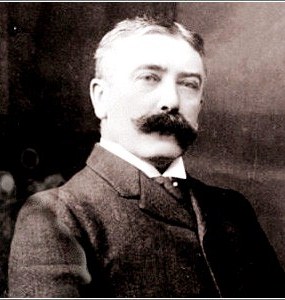 F. de Saussure wrote his first work "Memoir on the original vowel system in Indo-European languages" in 1878 at the age of 21 and immediately glorified the young linguist in scientific circles, although he was received ambiguously by scientists. Most linguists considered his writings far-fetched, superficial, and devoid of evidence. However, he continued to work hard on his theory, studying ancient Indo-European languages, but during his lifetime this work never received recognition in linguistic circles. The main work of the scientist "Course of General Linguistics" was published only three years after his death, in 1916. And only half a century later, Ferdinand de Saussure was called the “father” of linguistics of the twentieth century, the founder of the Geneva linguistic school. Today his Memoir is regarded as a shining example of scientific foresight.
F. de Saussure wrote his first work "Memoir on the original vowel system in Indo-European languages" in 1878 at the age of 21 and immediately glorified the young linguist in scientific circles, although he was received ambiguously by scientists. Most linguists considered his writings far-fetched, superficial, and devoid of evidence. However, he continued to work hard on his theory, studying ancient Indo-European languages, but during his lifetime this work never received recognition in linguistic circles. The main work of the scientist "Course of General Linguistics" was published only three years after his death, in 1916. And only half a century later, Ferdinand de Saussure was called the “father” of linguistics of the twentieth century, the founder of the Geneva linguistic school. Today his Memoir is regarded as a shining example of scientific foresight.
(July 10, 1856 - January 7, 1943), inventor in the field of electrical and radio engineering, engineer, physicist
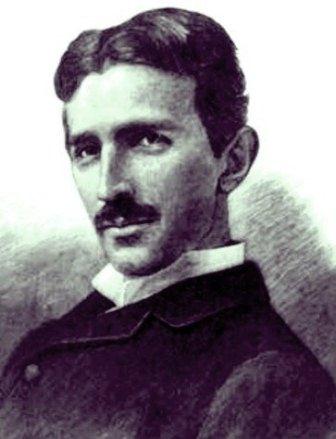 Contemporaries often pronounced the name of Nikola Tesla with mystical fear: the scientist was too extraordinary, incomprehensible and mysterious person. The significance of his discoveries in various fields of science can hardly be overestimated: he discovered fluorescent light, alternating current, wireless transmission of energy; he developed the basics of treatment with high-frequency currents and the principles of remote control, designed the first solar-powered motor, the first electric clock and many other devices that humanity uses today. Suffice it to say that he invented the radio before Popov and Marconi, and received the three-phase current earlier than Dolivo-Dobrovolsky. He has issued more than 300 patents for his inventions, and all modern electric power industry is based on his discoveries.
Contemporaries often pronounced the name of Nikola Tesla with mystical fear: the scientist was too extraordinary, incomprehensible and mysterious person. The significance of his discoveries in various fields of science can hardly be overestimated: he discovered fluorescent light, alternating current, wireless transmission of energy; he developed the basics of treatment with high-frequency currents and the principles of remote control, designed the first solar-powered motor, the first electric clock and many other devices that humanity uses today. Suffice it to say that he invented the radio before Popov and Marconi, and received the three-phase current earlier than Dolivo-Dobrovolsky. He has issued more than 300 patents for his inventions, and all modern electric power industry is based on his discoveries.
The work of the brilliant scientist was noted by the Nobel Committee, but Tesla refused the prize, not wanting to receive it together with Edison, whom Tesla could not forgive "black PR" against one of his inventions.
Nikola Tesla died in 1943 in his own laboratory, in complete poverty. Many of his outstanding discoveries are forever lost for future generations: most of the scientist's diaries disappeared without a trace. Tesla's contemporaries believe that he himself burned them on the eve of World War II, believing that humanity is not yet capable of using the knowledge contained in them for its own benefit, and not to its detriment.
Mozhaisky Alexander Fedorovich (1825 - 1890), Russian military leader, rear admiral, inventor, aviation pioneer
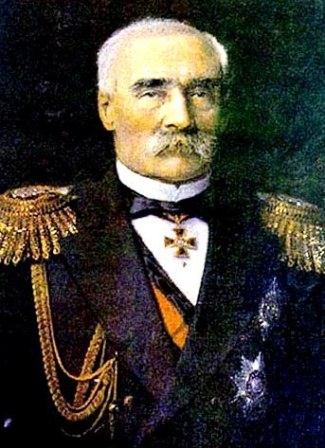 The idea to build a flying device heavier than air has long worried the Russian naval officer Alexander Mozhaisky, but to start work on a fundamentally new project aircraft he was only able to do so in 1876 when he enlisted in the Marine Corps. In the process of working on his invention, Mozhaisky consulted the largest Russian scientists, and built the plane at his own expense.
The idea to build a flying device heavier than air has long worried the Russian naval officer Alexander Mozhaisky, but to start work on a fundamentally new project aircraft he was only able to do so in 1876 when he enlisted in the Marine Corps. In the process of working on his invention, Mozhaisky consulted the largest Russian scientists, and built the plane at his own expense.
The tests of the world's first aircraft took place on July 20, 1882. The device managed to get off the ground and fly some distance, but then it lost speed and fell to the ground, damaging the wing. Mozhaisky did not manage to repair the plane: he ran out of his own funds, and the government did not show any interest in the invention. So the unique apparatus stood under open air several years until it was disassembled. However, despite the lack of government support, the naval officer did not give up scientific research on aeronautics: on the contrary, for the sake of them he left military service and continued scientific work at his own modest means. At the end of his life, Alexander Fedorovich Mozhaisky wrote in his diary: "I wanted to be useful to my Fatherland ..."
After Mozhaisky's death, his son turned to the government with a request to buy the remains of the plane so that Russian scientists could continue to work on improving the flying device, but was refused.
They were able to appreciate the merits of the Russian seaman-inventor only in the twentieth century, when aircraft construction was widely developed. Aviation historians have noted that all five basic elements inherent in modern aircraft were present in Mozhaisky's design. It turned out that his ingenious invention was ahead of its era by several decades.
Pirogov Nikolay Ivanovich (November 13, 1810 - November 23, 1881), pRussian surgeon, naturalist, anatomist, teacher, corresponding member of the St. Petersburg Academy of Sciences.
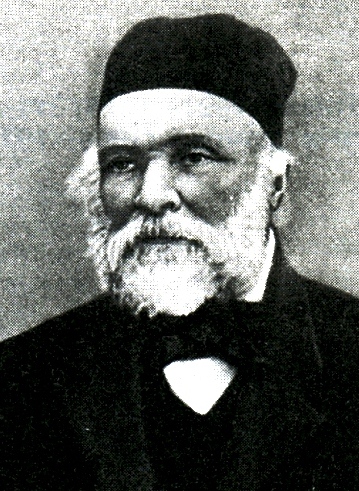 Today the name of Nikolai Pirogov - the founder of Russian military field surgery, the creator of topographic anatomy - is included in all medical textbooks, reference books and encyclopedias. The tactics of surgical intervention developed by him made it possible to turn surgery into a science. His unique surgical techniques to avoid amputation became a real breakthrough in the world of surgery. Nowadays, one of the methods of carrying out operations is called: "Pirogov's operation".
Today the name of Nikolai Pirogov - the founder of Russian military field surgery, the creator of topographic anatomy - is included in all medical textbooks, reference books and encyclopedias. The tactics of surgical intervention developed by him made it possible to turn surgery into a science. His unique surgical techniques to avoid amputation became a real breakthrough in the world of surgery. Nowadays, one of the methods of carrying out operations is called: "Pirogov's operation".
Despite the huge contribution to the development of surgery, Pirogov was out of favor with Tsar Alexander II for criticism of the general state of the Russian army. By decree of the tsar, he was sent into exile in Ukraine, where he was then sent into retirement without the right to receive a pension. But even after that, the scientist remained faithful to his work: in the village where he was exiled, Pirogov organized a hospital, in which he worked as a simple doctor until his death.
*****
This list can be continued for a long time: fate rarely spoiled the great scientists and pioneer researchers. And today, little has changed in this regard, it is enough to recall the difficult path of a Russian scientist and inventor. His idea of creating a string transport Sky way is still perceived by many as a utopia. Well, history repeats itself: this ingenious invention was ahead of its time.
Scientists are notoriously strange people. In any case, a person needs to be very different from the majority in order to be able to offer non-standard ideas. Many scientists were eccentric and sarcastic, others were arrogant who could not understand why everyone around them was so stupid. And some were ready to lay down their whole lives to make a discovery that would turn the world upside down. Therefore, it is quite interesting to take a look at ten of the strangest facts about the most famous scientists in history.
No beans
You can thank Pythagoras for one of the pillars of geometry - the theorem named after him. However, some of his ideas were not as brilliant. For example, he ate a vegetarian diet, but never wanted to eat beans. Legend has it that beans are partly to blame for his death. Allegedly, bandits attacked his house, he began to run away, but ran into a bean field. He decided that he would rather die than step there with at least one foot, and his throat was quickly cut.
When to step back
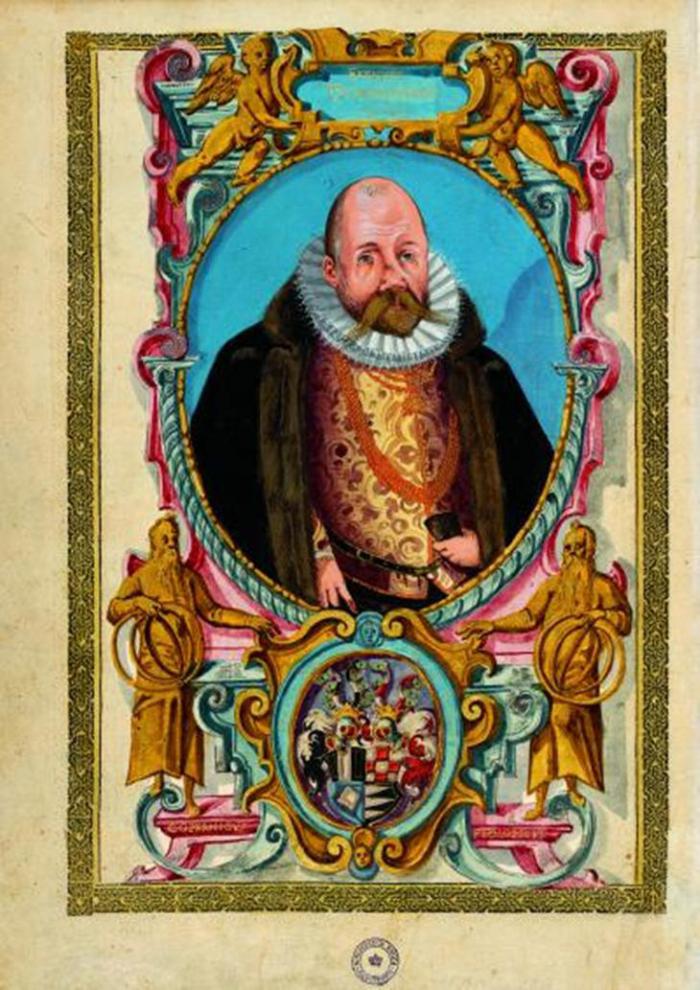
The 16th century Danish astronomer Tycho Brahe was a nobleman known for his eccentric way of life and death. He lost his nose in a college duel and has worn a metal prosthesis ever since. And he loved parties - he had his own island, where he invited his friends to do various wild antics. He showed the guests the elk, whom he had tamed, as well as the dwarf, whom he held by the court jester and fed him scraps from the table, like a dog. However, his love of partying was the cause of his death. At a banquet in Prague, Braga had to go to the toilet, but he stayed at the table, as this would be a violation of etiquette. And he made the mistake of eventually developing a kidney infection and his bladder burst 11 days later.
Unsung hero

Nikola Tesla was one of the unsung heroes of science. He came to America from Serbia in 1884 and immediately went to work for Thomas Edison, making a number of breakthroughs in radio engineering, robotics and electronics, some of which Edison appropriated for himself. In fact, it was Tesla who invented the Edison light bulb. However, Tesla was not just compulsive in his scientific wanderings - most likely, he suffered from obsessive-compulsive disorder, refusing to touch anything if there was any dirt there. He was also afraid of hair, pearl earrings and everything round. In addition, he was obsessed with the number three - for example, he walked around the building three times before entering. And at every meal, he used exactly 18 napkins to clean cutlery.
Absent-minded professor
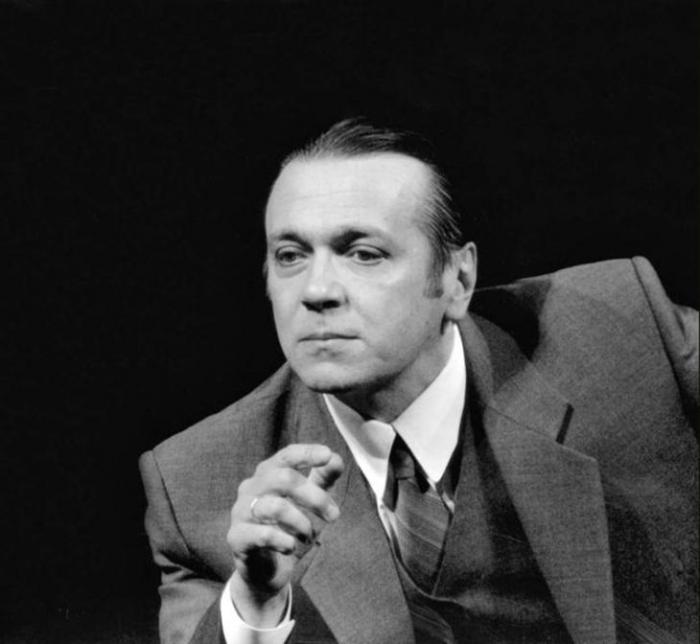
Werner Heisenberg is an excellent example of a brilliant theoretical physicist who has always been in the clouds. In 1927, he derived the famous uncertainty equations that are involved in quantum mechanics, rules that explain the behavior of small subatomic particles. However, he practically failed the exam for doctor, since he knew practically nothing about experimental methods. When the examiner asked him how the battery worked, it turned out that the physicist had no idea about it.
Prolific polymath
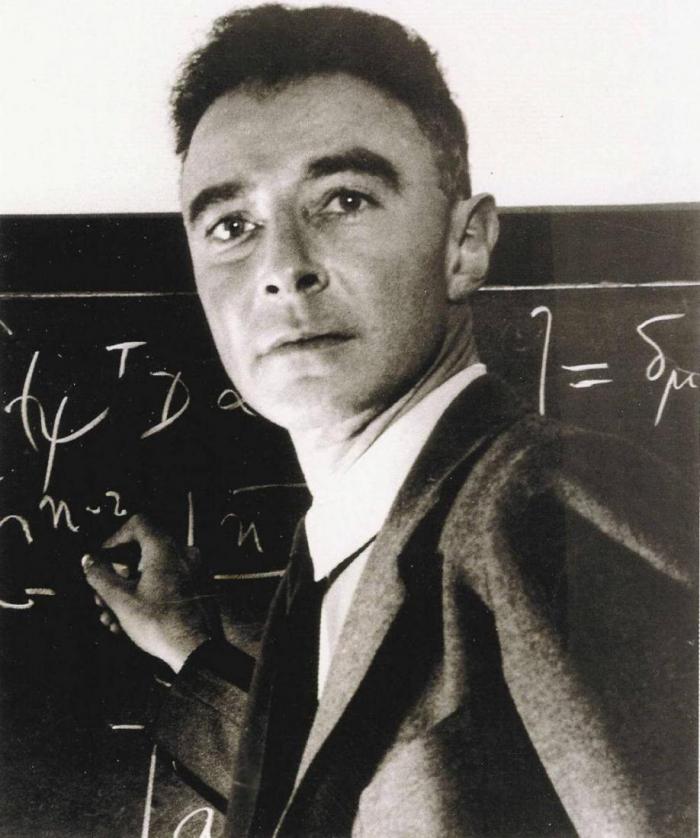
Physicist Robert Oppenheimer was a polymath, fluent in eight languages, and had a wide range of interests, including poetry, linguistics and philosophy. As a result, Oppenheimer sometimes found it difficult to understand the limitations of others. For example, in 1931 Lev Nedelsky worked with him at the same university. One day Oppenheimer asked a colleague to write a report for him, giving him a book containing all the necessary information. Later, a colleague returned puzzled - after all, the book was in Dutch. Oppenheimer was no less surprised, as he believed that Dutch is an extremely simple and accessible language.
Chronology
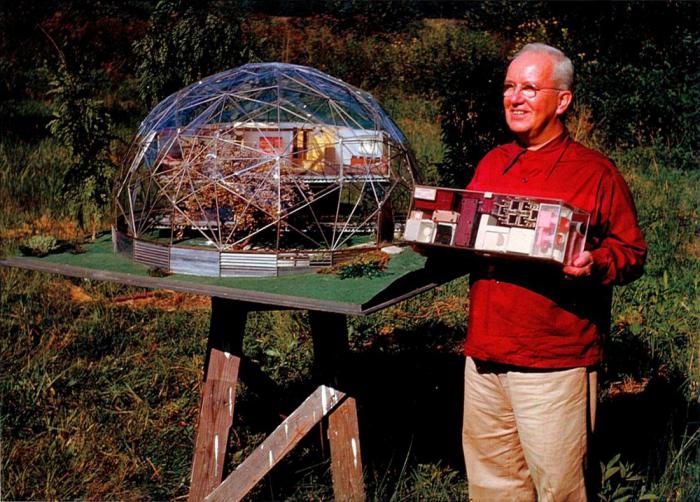
Architect and scientist Buckminster Fuller is best known for the creation of the geodesic dome in the thirties and several other striking discoveries. But Fuller is also remembered by everyone as an extremely eccentric person. He wore three watches, set to different time zones, when traveling long distances, and also slept only two hours a day (he later had to give up this venture). But he also spent a lot of time chronologizing his life. From 1915 to 1983, Fuller kept a detailed diary, which he updated every 15 minutes. As a result, his diary reached 82 meters in height and is now kept at Stanford University.
Homeless mathematician
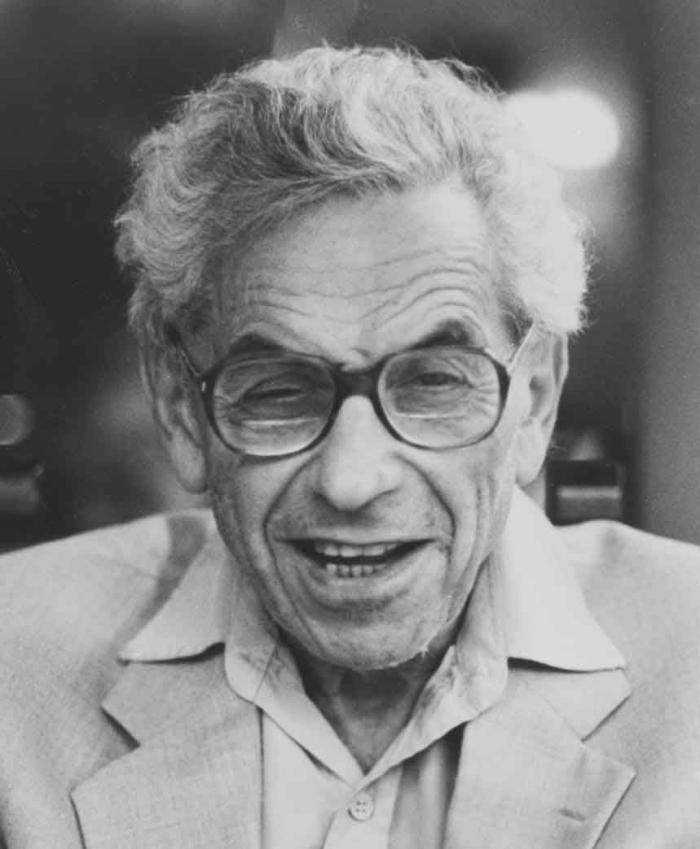
Pal Erdos was a Hungarian mathematical theorist who was so devoted to his work that he never got married, lived on the street and could show up to his friends at any time, drop in without asking, and stay in the house for several days while working on his theories.
Joker Physicist
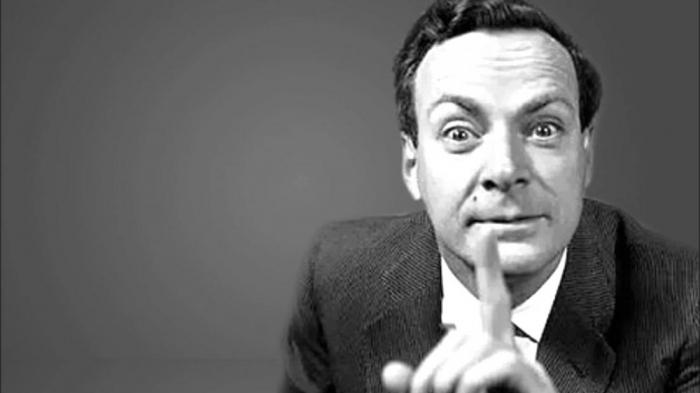
Richard Feynman was one of the most prolific and famous physicists of the 20th century. But he was also a joker and a mischievous person. For example, while working on projects, he amused himself by picking locks and security systems to show how imperfect they were. In addition, he spent time with the girls from Las Vegas, while waiting for the Nobel Prize, learned the Mayan language and did many more strange things.
Strange furniture
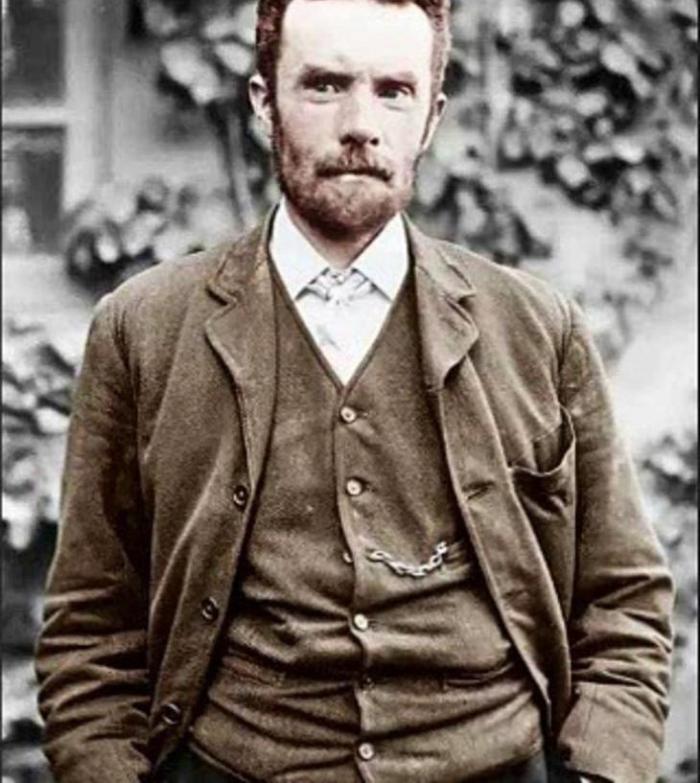
British mathematician and electrical engineer Oliver Heaviside was a genius who made many discoveries. But at the same time, he was incredibly strange - he furnished his house with granite blocks instead of furniture, painted his nails bright pink, could only drink milk all day, and so on.
Bone wars
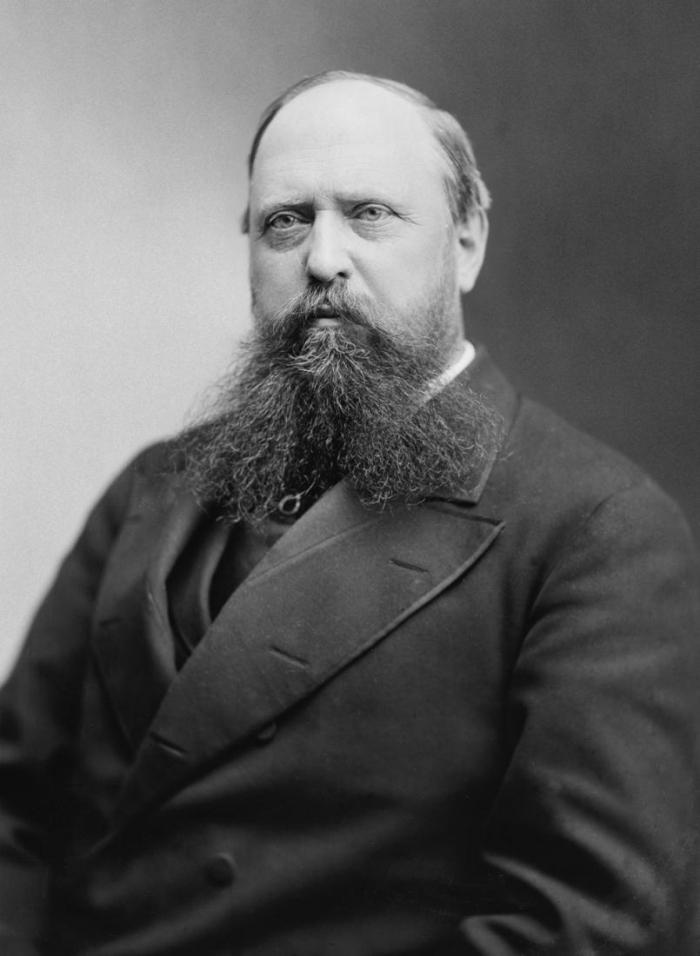
Otniel Charles Marsh and Edward Cope were the leading breakthrough paleontologists in dinosaur research in the late 18th and early 19th centuries. And both scientists used dirty tactics to get around the other - sending spies, bribing watchmen, stealing dinosaur bones from each other, and publicly humiliating each other. But at the same time, they still made a huge contribution to the paleontological knowledge of dinosaurs.




